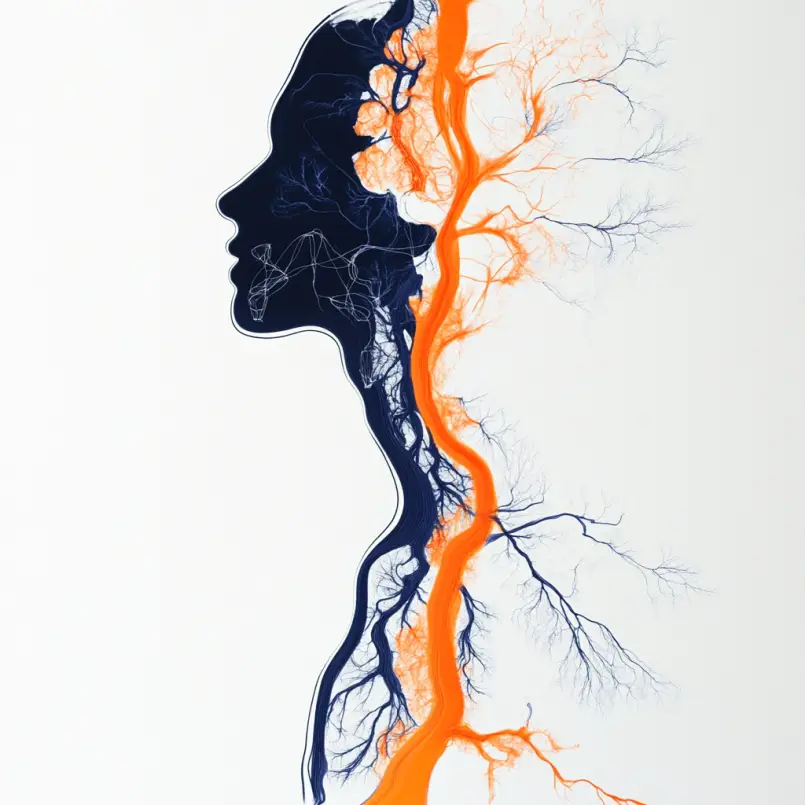Conditions
Autonomic Dysfunction: Understanding Causes, Symptoms, and Treatment Options
Published: September 14, 2024
Author: Dr. Achillefs Ntranos MD

Are you experiencing unexplained dizziness, fainting spells, or digestive issues? These could be signs of autonomic dysfunction, a condition affecting millions worldwide. In this comprehensive guide, we'll explore the ins and outs of this complex disorder, helping you understand its causes, recognize symptoms, and learn about available treatments.
What is Autonomic Dysfunction?
Autonomic dysfunction, also known as dysautonomia, occurs when there's damage or disruption to the autonomic nervous system (ANS). This system controls involuntary bodily functions such as heart rate, blood pressure, digestion, and temperature regulation. When the ANS doesn't work properly, it can lead to a wide range of symptoms affecting multiple body systems.
Causes of Autonomic Dysfunction
Autonomic dysfunction can stem from various underlying conditions or factors:
- Diabetes
- Parkinson's disease
- Multiple system atrophy
- Autoimmune disorders
- Infections (including COVID-19)
- Toxins or medications
- Genetic disorders
COVID-19 and Autonomic Dysfunction
Recent studies have shown a link between COVID-19 infection and the development of autonomic dysfunction, particularly postural orthostatic tachycardia syndrome (POTS). If you've had COVID-19 and are experiencing new symptoms, consult your healthcare provider.
Symptoms of Autonomic Dysfunction
Symptoms can vary widely depending on which parts of the ANS are affected. Common signs include:
- Dizziness or fainting upon standing (orthostatic hypotension)
- Rapid heartbeat or palpitations
- Digestive issues (nausea, constipation, diarrhea)
- Excessive or insufficient sweating
- Bladder problems
- Sexual dysfunction
- Vision changes
- Exercise intolerance
Diagnosing Autonomic Dysfunction
Diagnosing autonomic dysfunction can be challenging due to the wide range of symptoms. Your healthcare provider may use several methods:
1. Medical History and Physical Examination
Your doctor will ask about your symptoms and perform a thorough physical exam.
2. Autonomic Function Tests
These may include:
- Tilt table test
- Sweat test
- Heart rate variability testing
- Blood pressure monitoring
3. Small Fiber Skin Biopsy
This minimally invasive procedure can help diagnose small fiber neuropathy, a type of autonomic neuropathy. It involves removing a tiny piece of skin to examine nerve fiber density.
Small Fiber Skin Biopsy for Autonomic Neuropathy
A small fiber skin biopsy for autonomic neuropathy is a safe, minimally invasive procedure that can detect damage to both sensory and autonomic nerve fibers. This gold-standard test provides objective evidence of nerve fiber loss that helps confirm the diagnosis of dysautonomia.
4. Blood Tests
To check for underlying conditions like diabetes or autoimmune disorders.
5. Imaging Studies
Such as MRI or CT scans to rule out structural abnormalities.
Treatment Options for Autonomic Dysfunction
Treatment typically focuses on managing symptoms and addressing underlying causes. Options may include:
- Lifestyle modifications (e.g., increasing fluid and salt intake, wearing compression stockings)
- Medications to regulate blood pressure, heart rate, or digestion
- Physical therapy and exercise programs
- Dietary changes
- Stress management techniques
Seek Medical Advice
If you're experiencing symptoms of autonomic dysfunction, it's crucial to consult a healthcare professional. Early diagnosis and treatment can significantly improve quality of life and prevent complications.
Postural Orthostatic Tachycardia Syndrome (POTS)
POTS is a form of autonomic dysfunction characterized by an abnormal increase in heart rate upon standing. Symptoms include:
- Rapid heartbeat
- Dizziness or lightheadedness
- Fatigue
- Brain fog
- Exercise intolerance
- Headaches
POTS and COVID-19
Recent studies have shown an increase in POTS diagnoses following COVID-19 infections. While the exact mechanism is still being researched, it's believed that the virus may trigger an autoimmune response affecting the autonomic nervous system.
Preventing Autonomic Dysfunction
While not all cases of autonomic dysfunction can be prevented, you can take steps to reduce your risk:
- Manage underlying conditions like diabetes effectively
- Maintain a healthy lifestyle with regular exercise and a balanced diet
- Avoid toxins and limit alcohol consumption
- Stay hydrated and maintain proper electrolyte balance
- Practice stress-reduction techniques
When to Seek Medical Advice
Contact your healthcare provider if you experience:
- Frequent dizziness or fainting
- Unexplained changes in heart rate or blood pressure
- Persistent digestive issues
- Difficulty regulating body temperature
- Any symptoms that interfere with daily activities
Early intervention can make a significant difference in managing autonomic dysfunction and improving your quality of life.
Conclusion
Autonomic dysfunction is a complex condition that can significantly impact daily life. By understanding its causes, recognizing symptoms, and seeking prompt medical attention, you can take control of your health. Remember, with proper diagnosis and treatment, many people with autonomic dysfunction lead fulfilling lives. If you're concerned about your symptoms, don't hesitate to reach out to our neurology clinic.
Ready To Take The Next Step?
Connect with our neurologist to discuss your autonomic dysfunction symptoms and explore treatment options.
About the Author
Dr. Achillefs Ntranos MD
Board-Certified Neurologist
Achilles Neurology Clinic
Dr. Achillefs Ntranos MD is a board-certified neurologist and MS specialist known for his thorough evaluations and compassionate approach. Originally from Greece, he trained at Johns Hopkins University and Mount Sinai Hospital before founding Achilles Neurology Clinic in Beverly Hills to deliver comprehensive, patient-centered neurological care. He specializes in MS, autoimmune neurology, neuropathy, headaches, and other neurological disorders, blending research-driven insights with personalized treatment plans.